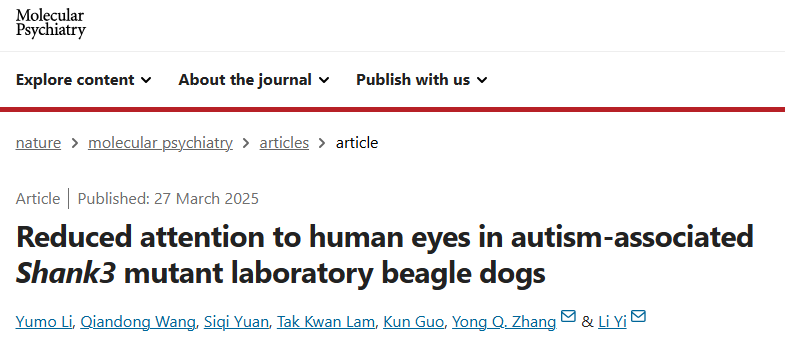Molecular Psychiatry | Reduced attention to human eyes in autism-associated Shank3 mutant laboratory beagle dogs

Abstract
Autistic individuals often exhibit reduced attention to faces and eyes, which may underlie their social difficulty. This study used eye-tracking techniques to explore visual attention towards faces in Shank3 mutant laboratory beagle dogs, a model for autism, to identify parallels with human autism. We first assessed visual attention differences towards the eyes between Shank3 mutant and wild-type (WT) laboratory beagles by presenting them with human and dog face images. Then, using the gaze cueing paradigm, we directed the dogs’ gaze towards the eyes and mouth and quantified their gaze shifts. Finally, we investigated the impact of oxytocin on eye-gaze behavior by comparing gaze patterns under pre-administration, vehicle, and oxytocin conditions while viewing human faces. We found that mutant dogs showed a reduced proportional viewing time of human eyes than WT dogs (p = 0.032), but no difference in proportional eye viewing time when viewing dog faces (p = 0.691). Mutant dogs shifted their gazes away from the human eyes more quickly than the mouth (p = 0.043), unlike WT dogs (p = 0.345), suggesting an active eye avoidance. Furthermore, exogenous oxytocin increased proportional viewing time on human eyes in mutant dogs than pre-administration and vehicle conditions (p = 0.022), suggesting a potential effect of oxytocin on social attention in autism. To our knowledge, this study is the first to report an eye avoidance phenotype in an animal model of autism. These findings contribute to our understanding of the mechanisms underlying social difficulties in autism and the development of supporting strategies for autism.
Original link: https://www.nature.com/articles/s41380-025-02965-7